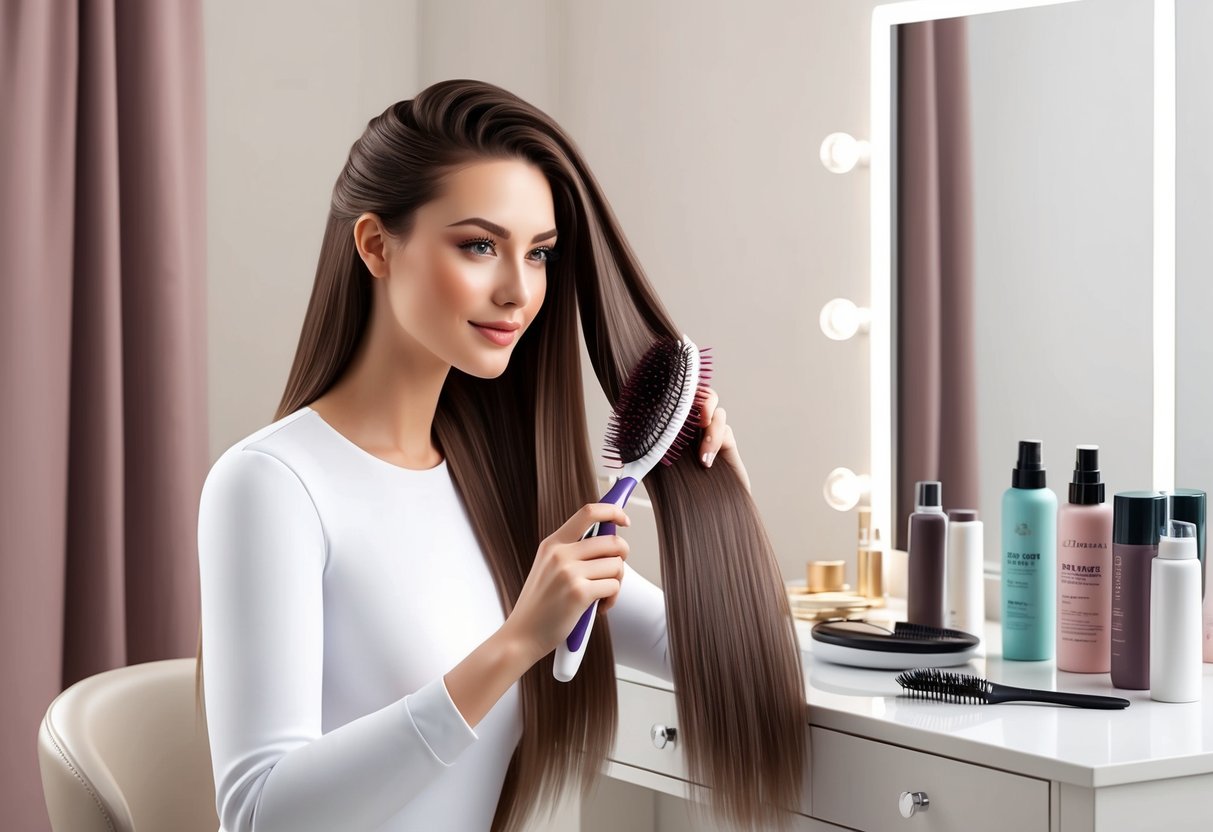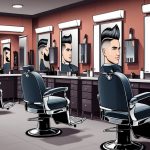
Lifestyle Habits for Gorgeous Locks
Daily routines heavily influence hair strength, shine, and growth. Proper care and protection, even outside the shower, are key for maintaining healthy long hair and minimizing breakage.
Protecting Hair While Sleeping
Nighttime habits play a significant role in long hair maintenance. Sleeping on a silk or satin pillowcase reduces friction, which helps prevent tangles, breakage, and frizz.
These gentle fabrics are less likely to strip natural oils from hair, keeping it smoother and more hydrated by morning. Tying hair loosely in a low braid or using a soft scrunchie can also prevent knots and minimize pulling on the hair shaft.
Experts recommend avoiding tight ponytails overnight, as they can contribute to stress on hair follicles. Regularly brushing hair before bed, ideally with a wide-tooth comb or a brush designed for detangling, helps distribute scalp oils and reduces breakage risk.
For those with particularly delicate or processed hair, wrapping hair in a silk scarf can provide extra protection and help maintain styling overnight.
Impact of Stress and Environment
External stressors—from emotional pressure to environmental exposure—can directly impact hair quality. Chronic stress may alter hormone levels and contribute to increased shedding or slower growth.
Practicing stress-relief techniques such as meditation, adequate sleep, and gentle exercise can support overall hair health. Environmental factors like UV rays, humidity, harsh winds, and pollution gradually weaken hair strands and make them prone to dryness and split ends.
Limiting time in harsh sunlight, using hats for coverage, and choosing protective sprays formulated with UV filters or antioxidants can minimize external damage. Those living in urban settings may find that regular, gentle cleansing helps remove pollutants and keep hair looking vibrant and manageable.
For added moisture retention, applying leave-in conditioners or natural oils can help lock in hydration for longer-lasting shine and resilience.
Frequently Asked Questions
Long hair requires a balanced approach that combines gentle washing, strategic conditioning, routine trims, and careful styling methods. Nutritional support and the right haircuts can also play a big role in how healthy and strong long locks look and feel.
What are the best practices for washing and conditioning long hair?
Washing long hair two or three times per week helps maintain natural oils and keeps strands hydrated. Using sulfate-free shampoo is recommended to avoid stripping these oils, as harsh ingredients can leave hair dry and brittle.
Conditioner should be applied generously, focusing on the mid-lengths and ends. Deep conditioning treatments once a week provide extra moisture and repair, making a routine that preserves both shine and manageability especially important for lengthy tresses.
Learn more about sulfate-free shampoo and the importance of conditioning for long hair by visiting this detailed post on long hair care secrets.
Which types of haircuts are ideal for enhancing the beauty of long hair?
Layered haircuts are a popular choice because they add shape and movement without compromising length. Soft face-framing layers can also highlight facial features and prevent hair from appearing heavy or limp.
Regular dusting or micro trims help to maintain the length of long hair while removing damaged ends. Subtle shaping around the ends keeps the overall appearance looking cared for and promotes a healthy structure.
How can I prevent split ends and breakage in long hair?
Frequent trims every 8 to 12 weeks can stop split ends from traveling up the hair shaft. Minimizing mechanical damage by using a wide-tooth comb on wet hair and avoiding rough towel drying is also beneficial.
Protecting hair at night with a silk or satin pillowcase reduces friction and lessens breakage. Protective styles like loose braids can prevent tangles and mechanical stress, keeping long hair stronger and smoother.
For more long hair care basics, see this advice from The Long Hair Community.
What styling tools and techniques are recommended for long hair to minimize damage?
Using heat styling tools sparingly and always applying a heat protectant helps limit damage. When using blow dryers, diffusers and lower heat settings are preferable for maintaining hair health.
Limit the use of tight elastics and opt for scrunchies or seamless bands instead. Protective styles such as gentle buns, braids, and ponytails can help reduce exposure to environmental factors and breakage from daily wear.
Expert recommendations on heat protectants and styling options for long hair can be found in this styling guide for healthy long hair.
How often should long hair be trimmed to maintain its health and appearance?
Getting a trim every 8 to 12 weeks is a common guideline for long hair maintenance. Regular trims remove split and damaged ends before they worsen, which helps prevent tangles and maintains a neat, polished look.
Keeping up with scheduled trims also allows for easier styling and reduces the risk of breakage from weakened hair ends. Regular trimming is recommended by professionals for maximizing length retention and overall hair health, as discussed in this article about the importance of regular trims.
What are essential nutrients and vitamins for maintaining the strength and shine of long hair?
Biotin, collagen, and other B vitamins are strongly linked to healthy hair growth and strength.
Protein-rich diets, along with iron, zinc, and vitamins A, C, and E, can enhance shine and reduce breakage.
Supplements containing these nutrients can support long hair health, especially when dietary intake may be insufficient.
Details on multivitamins and supplements that benefit hair growth are explored in this collection of long hair care tips.



